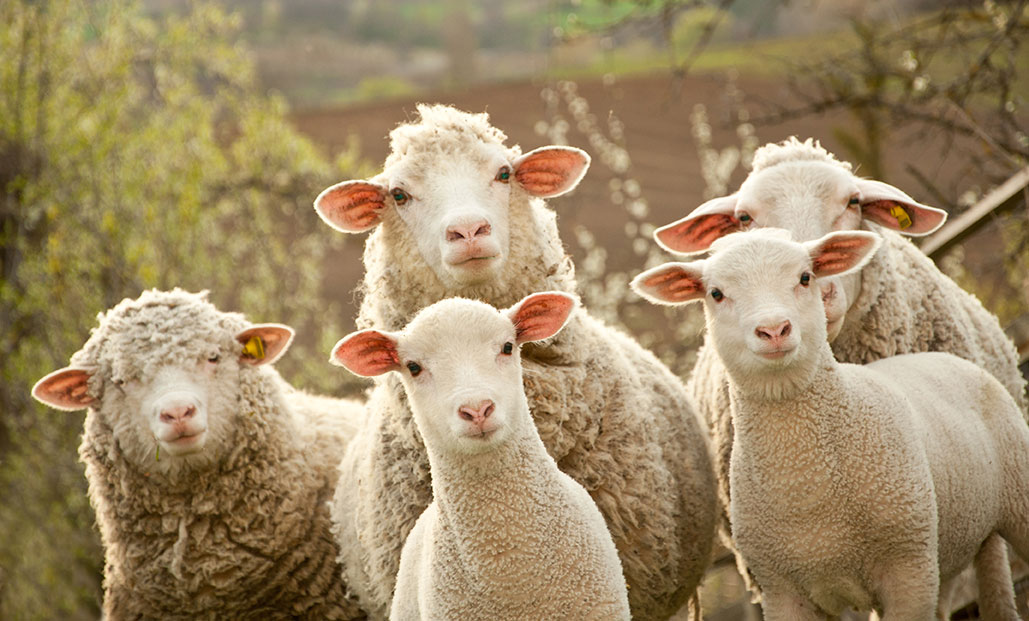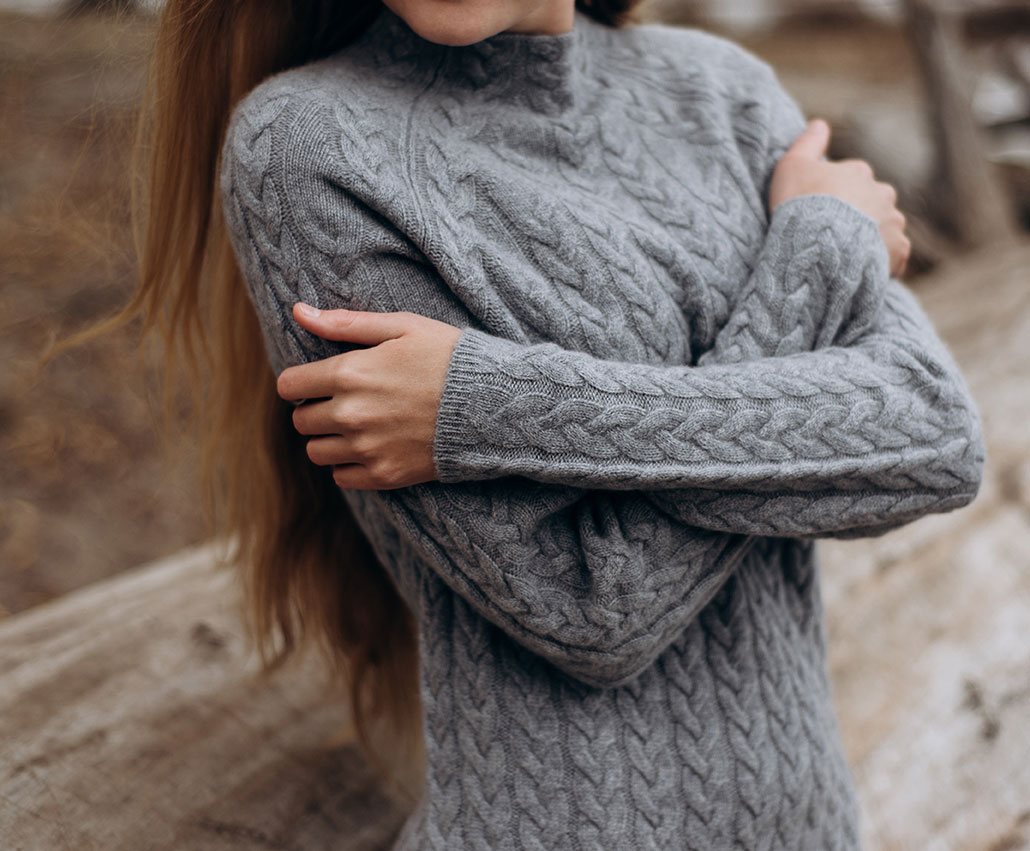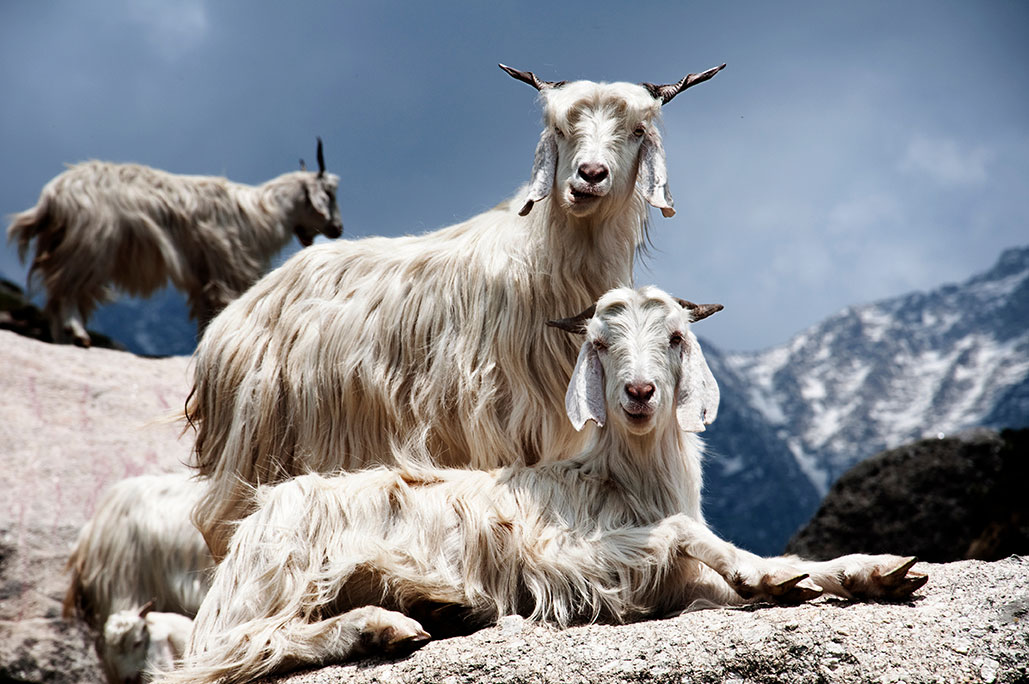Cashmere vs. Wool: What’s the Difference?
In the world of natural textiles, the term “wool” can be quite broad. While cashmere is sometimes referred to as “cashmere wool,” not all wool is cashmere. So, how do you differentiate between these types of wool?
It’s not always easy, but we’ll provide guidance on what to look for and how to avoid falling for marketing tactics that oversell lower-quality products. We’ll also give you tips on how to maintain your luxury garments so that they retain their value.
Are cashmere and wool the same thing?
Not exactly. Wool, in its most basic form, is a protein-based textile derived from the coats of specific animals. The most common sources are various breeds of sheep and goats, but wool can also come from musk oxen, rabbits, and certain types of camels.
If your clothing label simply says “wool” without any further details, it’s most likely sheep’s wool. It just doesn’t come from a breed or region that requires specific labeling.


Specific types of wool
- Alpaca: Durable and lightweight wool that comes from the alpaca animal.
- Angora: Fine and efficient insulation wool obtained from the fur of the Angora rabbit.
- Cashmere: A luxurious and soft wool obtained from a special breed of goat from the Kashmir Valley.
- Lambswool: Soft and smooth wool obtained from the first shearing of a lamb when it is a few months old.
- Llama: Llama wool is used to create clothes and crafts from the fine undercoat, while coarser guard hairs can be used to make durable items like rugs and ropes.
- Lopi: A unique wool spun from Icelandic sheep with a tough outer layer and water-resistant qualities.
- Merino: One of the most popular types of wool worldwide, obtained from the wool of merino sheep mainly bred in Australia.
- Mohair: Natural fibers from Angora goats that produce textiles with a combination of thick guard hairs and fine undercoat.
- Qiviut: Undercoat wool from the Arctic Musk-Ox bred in Alaska and Canada, which is up to eight times warmer than sheep’s wool.
- Shetland: Coarse wool from the Shetland Islands of Scotland, known for its thickness due to the breed’s origins in a cold climate.
- Tibetan: Soft and curly wool from Tibetan lambs that are usually raised in China.
Even with all that competition, Cashmere, the world’s most luxurious wool textile, continues to maintain its status in the textile industry. So, what makes cashmere so special compared to all other types of wool?
Is Cashmere the warmest wool?
Cashmere is at least eight times warmer than merino wool, and other types of wool, making it one of the warmest textiles that’s readily available and relatively affordable.
What about the cost and durability?
Few types of wool can compete with the expense of cashmere, and its value endures far longer than many other types of wool. In a straight comparison to lambswool, cashmere has more durability because it comes from mature animals rather than young ones, which is why cashmere has become a timeless standard. For clothing, Cashmere, Lopi and Shetland are the most durable yarn.
How should wool and cashmere be washed?
The manufacturer’s label will be your first reference for the best cleaning process, and handwashing with a mild detergent in lukewarm water will keep most natural fiber garments fresh and stain-free. Never hang your wool garments after washing, simply lay them out flat until dry.


Static in your knits? Try these…
- Water: Flicking or spraying a little water on the surface of your cashmere garment will help to get rid of static electricity instantly. Or simply getting your hands wet and brushing them over your cashmere clothes. The only con here is that while water neutralizes the static instantly, it can wear off quickly.
- A Metal Hanger (or any metal): Glide a metal clothing hanger through the inside of the item – the metal discharges the electricity, thereby removing the static. If you do not have a metal hanger, you can also use another metal item or Safety pin. Hiding a metal safety pin into the inside seam or pocket of your cashmere garment. The metal prevents that static electricity. Just touch some sort of grounded metal, and the electricity will discharge leaving you static-free. Metal can attract and discharge the built-up static electricity, returning the object to its natural balanced state.
- Static Solution Spray: You can buy from stores specially manufactured spray for static removal.
- Homemade Static Guard: Mixing a cap of fabric softener with a full water of spray bottle and spraying will leave you static free and smelling fresh.
- Hairspray: Spray a light amount of hairspray onto your cashmere clothes before putting them on. This quick trick works like a charm to eliminate static.
How do I safely store wool garments?
Dark storage areas are the perfect breeding ground for moths that love to feast on wool fibers. Natural repellents work best as preventives, so use freshly oiled cedar wood and lavender sachets in the compartments you’ll use to store your wool and cashmere. Tucking a Clothes Moth Pheromone Trap into a strategic spot is the next step in preventing infestations.
Help! My wool sweater is stretched out of shape.
Don’t worry, if your cashmere and wool clothing has stretched and lost its shape, there are ways to fix it. While these types of natural fiber fabrics can be delicate, there are steps you can take to reshape them. Here are some tips to rescue a misshapen wool garment:
- Wash the garment using lukewarm water and a mild soap as you normally would. As for an exact temperature for lukewarm, there’s no set standard. Some believe it to be between 98° F and 105° F. Others say lukewarm it’s in the range of 80° F to 90° F.
- Let the garment soak for 10 minutes.
- Rinse the garment thoroughly with lukewarm water.
- Gently squeeze out the excess water, but DO NOT twist or wring the fabric.
- Place the garment on a towel and roll it up gently to remove any remaining water.
- Unroll the towel and carefully reshape the garment back to its original form. Allow it to air dry.
- If the garment has shrunk significantly, repeat the process while stretching the fabric back to its original size a little bit more with each cycle.
Why is my wool sweater so itchy?
To stop wool from itching, try switching to a softer type of wool, which has more fine undercoat hairs. For an existing piece, treat it with a wool-safe conditioner after cleaning to soften the fibers. Always check the garment tag for care instructions and test products on an unseen patch for colorfastness. Remember that cashmere is one of the most luxurious natural textiles and proper care can ensure long-term wear. The softness of wool depends on the type of hair used, and the youngest animals usually yield the more supple textiles. Take care of your wool garments and enjoy the warmth and coziness they provide for years to come.
Usually, only a cheaply made wool item is itchy, such as synthetic wool, also called wool-like acrylic. When needed, wool can be blended with other yarns. For some designs you must use blended yarns, for artwork or fit purpose.
Wool is a natural source from an animal, and it is best to keep the design simple and the yarn pure, reason why 100% merino or 100% cashmere are the most expensive.





